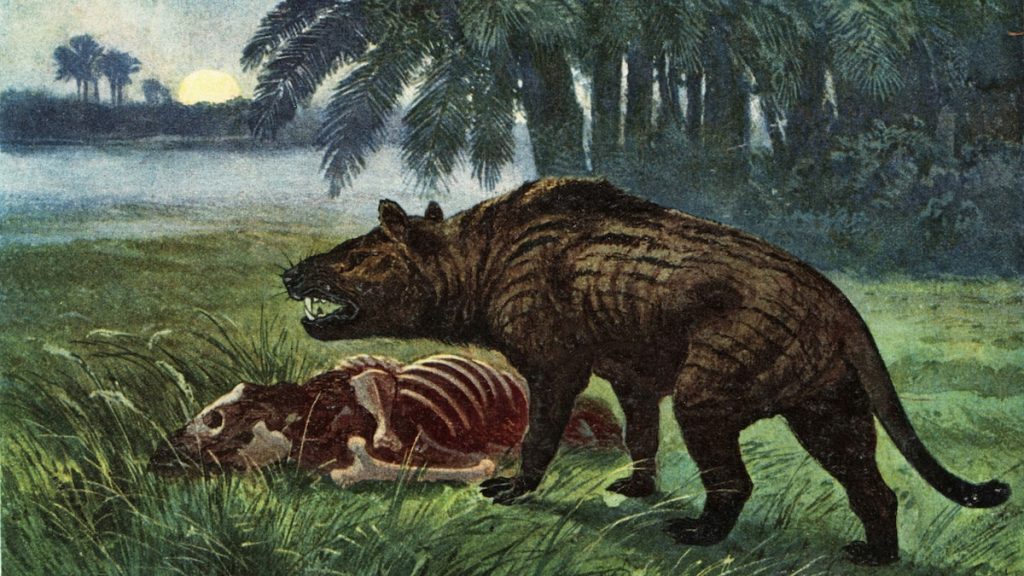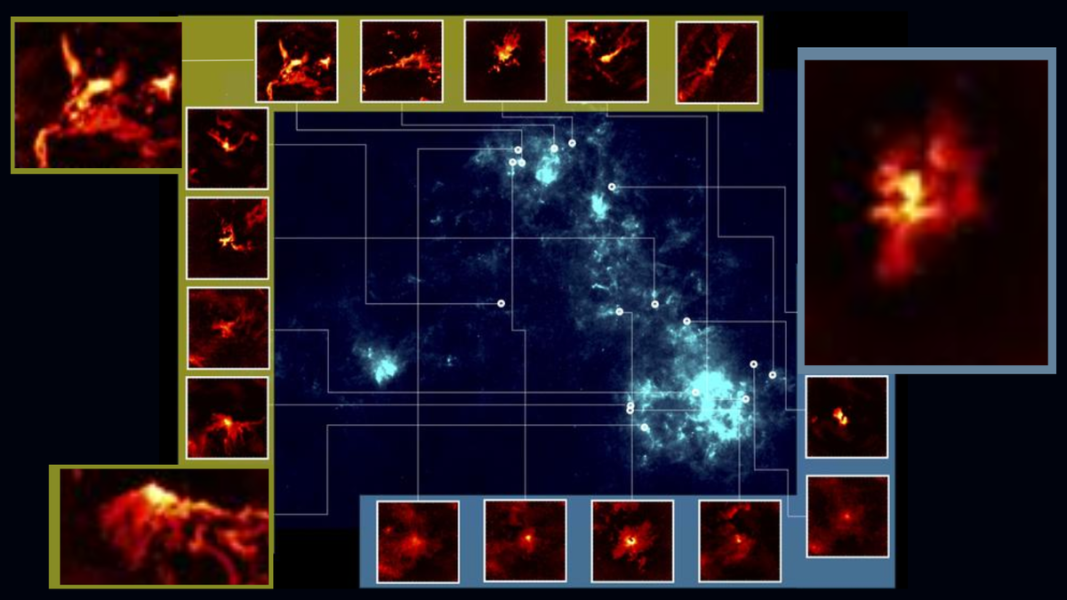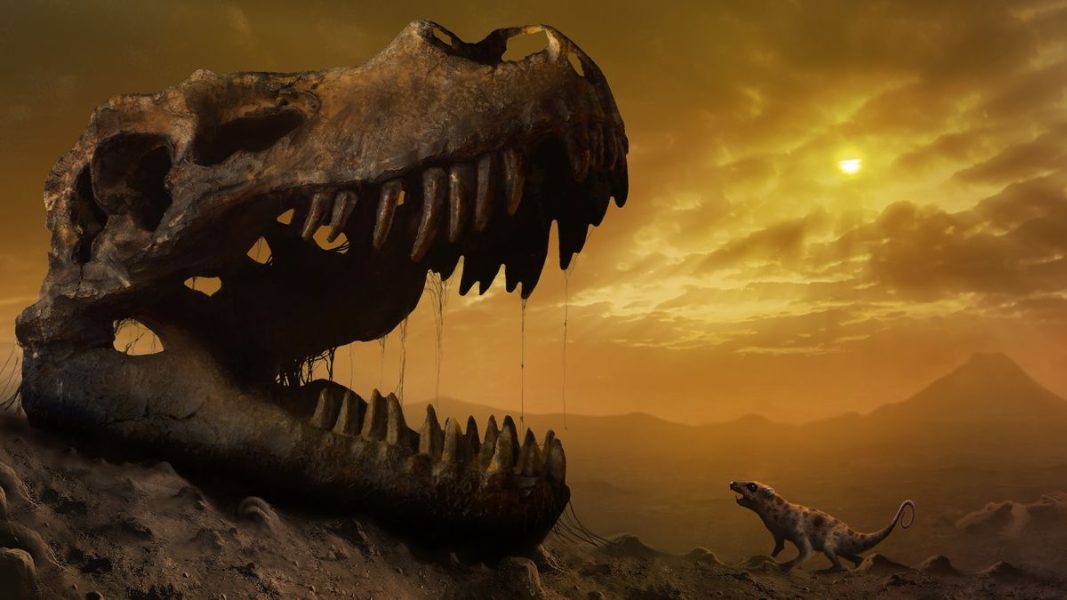Near perfect skull of apex predator reveals its ‘meat cleaving bite’ – National Geographic

Some were the size of a dog. Others were as large as polar bears. A newly-discovered fossil of the ferocious hyaenodont is helping scientists understand a little bit more about the mysterious creatures.Long before wolves or big cats, large hyaenodonts prowled the landscape.Despite their name, the carnivores were not hyenas. Hyaenodonts were an ancient group of four-legged flesh-eaters that spread from ancient Europe through Africa, Asia, and North America between 56 and about 5 million years ago.Most were small, comparable to a medium-sized dog, but the largest weighed more than 3,000 pounds and were larger than polar bears. These large species were the apex predators when the ancestors of cats and dogs were still small creatures.A newly-described fossil skull has given paleontologists their best look yet at a hyaenodont with a meat-cleaving bite.Found in the 30 million-year-old rock of Egypt’s Fayum Basin, the prehistoric skull represents a new genus of hyaenodont.“It was upside down when one of my colleagues noticed some large teeth sticking out of the ground,” says lead study author and Mansoura University paleontologist Shorouq Al-Ashqar.As rock was chipped away from the fossil, the paleontology team was ecstatic. It was a complete cranium, including teeth, preserved in three dimensions and not flattened like a pancake. “Finding a complete, three-dimensional skull is like a dream for a paleontologist,” Al-Ashqar says. The cranium turned out to belong to a previously unknown genus of hyaenodont. Al-Ashqar and colleagues have named the beast Bastetodon syrtos, the genus name translating to “teeth like the cat-headed goddess” in reference to the ancient Egyptian cat deity Bastet and the cat-like sharpness of the fossil creature’s teeth. The paleontologists have described the carnivore in the Journal of Vertebrate Paleontology.Fossils similar to Bastetodon had been found in Africa before, and previous generations of paleontologists classified them as another hyaenodont from Europe called Pterodon. The new fossil, however, shows that the fossil found in the Fayum is something new.“They make a good case that Bastetodon is a distinct new genus,” says Swedish Museum of Natural History paleontologist Lars Werdelin, who was not involved in the new study.In life, Al-Ashqar and colleagues estimate, Bastetodon would have been about 60 pounds. It was not one of the largest hyaenodonts, but neither was it one of the smallest. The fossil mammal’s body mass, Werdelin notes, would have been comparable to that of a striped hyena or small female leopard. The teeth of Bastetodon show the prehistoric mammal’s ability to shear flesh.Whereas fossil skulls are often missing teeth, the cranium of Bastetodon includes a complete upper row of teeth up to the canine. The arrangement indicated that Bastetodon had fewer teeth than some other hyaenodonts, missing a premolar and a molar seen in other species. That gives Bastetodon a relatively short, broad, and more cat-like snout best suited to delivering powerful bites.So far as the paleontologists can tell from the teeth, Bastetodon put those strong bites to work on muscle, viscera, and other relatively soft parts of carcasses rather than hard parts of the body like bone. The shape and arrangement of the predator’s teeth show that they were suited for a shearing bite best suited to cutting through flesh. The mammal’s cheek bones are stout and make a gap between the braincase and the cheek. Strong jaw-closing muscles threaded through these holes when the mammal was alive. In a case of convergent evolution, hyaenodonts like Bastetodon evolved shearing cheek teeth that worked similar to the cheek teeth cats and dogs us to cut and crunch today.Altogether, Al-Ashqar and colleagues propose, Bastetodon was a hypercarnivore—a meat-eating mammal that focused on consuming muscle, viscera, and softer parts of a carcass rather than chewing on or cracking open bones.During the time that Bastetodon lived in prehistoric Egypt, the area was a tropical rainforest, Al-Ashqar says. The habitat was home to early monkeys like Aegyptopithecus, ancient hippos, and early elephants. Bastetodon likely hunted some of the smaller creatures and scavenged on the carcasses of the larger ones.Precisely how the hyper-carnivorous hyaenodonts hunted, though, is still a mystery.“We just don’t have enough associated crania and postcrania to be sure,” Werdelin says. Without bodies to match the fossil skulls, in other words, it’s difficult to know whether Bastetodon and other hyaenodonts chased down their meals like wolves do, ambushed their prey like cats, or did something entirely different. The reason why hyaenodonts disappeared is also unknown.The earliest hyaenodonts evolved more than 56 million years ago, during the time Earth was recovering from the asteroid-driven mass extinction that ended the Age of Dinosaurs and warm, humid forests spread over the planet. Hyaenodonts were among the most widespread, prolific, and sometimes largest predators of their time. Their anatomy was unique, but they filled ecological roles resembling what cats, dogs, hyenas, and bears would eventually evolve into.It may be that the evolution of those more familiar carnivores led to the decline of hyaenodonts.At the same time Bastetodon was prowling the forests of prehistoric Egypt, the carnivore lineages that include cats and hyenas in one group, and dogs, bears, and pinnipeds in the other, had already split. Early cats and dogs were beginning to diversify and spread into new environments by 30 million years ago, taking small prey as the hyaenodonts focused on larger fare.Traditionally, paleontologists thought that the rise of cats, dogs, hyenas, and their relatives somehow outcompeted hyaenodonts. But no solid evidence supports this proposal. In fact, paleontologists have recently begun to question whether other pressures, such as the world becoming cooler and grasslands expanding where forests once grew, might have made hyaenodonts vulnerable to extinction and our modern carnivores simply followed in the hyaenodonts’ footsteps. Bastetodon and its relatives were surely powerful, formidable predators. Why such fierce creatures disappeared remains a mystery.Copyright © 1996-2015 National Geographic SocietyCopyright © 2015-2025 National Geographic Partners, LLC. All rights reserved
Source: https://www.nationalgeographic.com/animals/article/fossil-skull-hyaenodont-predator






